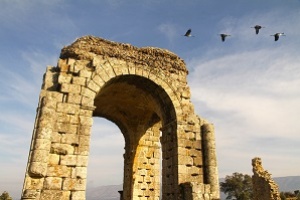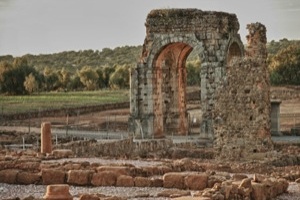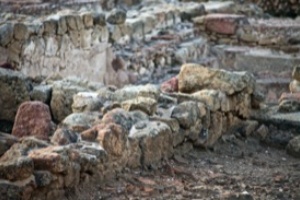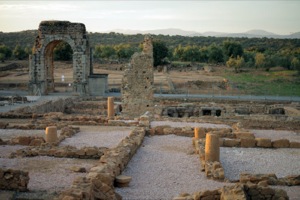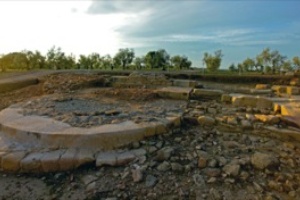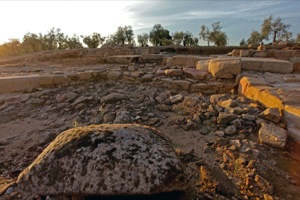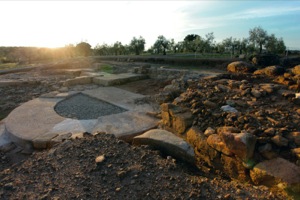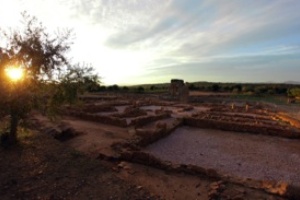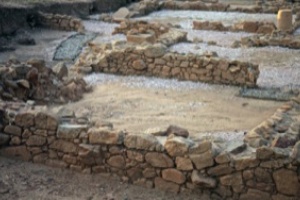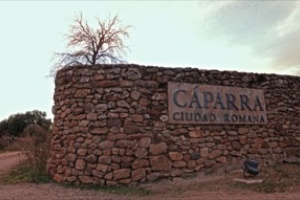Art and culture
The Roman town of Cáparra
Caparrá, which has uncertain origins, became a Roman municipium under Emperor Vespasian. The town's growth was propelled by its privileged position along the Silver Way
- Explore
- Ciudad romana de Cáparra
Come and explore unique Roman ruins in the Peninsula
Location and Contact:
- Contact person: General Directorate of Cultural Heritage
- Tel.:+34 927 19 94 85
- Reservations tel. number: +34 927 19 94 85
- Fax: +34 927 19 94 83
- Email: albaplata@juntaex.es
- Website address: viaplata.gobex.es
- Opening times
WINTER (1 October to 31 May)
Tuesday-Saturday
Morning: 10am-2pm
Afternoon: 4-7pm
Sundays: 10am-2pm (Afternoon Closed)
Closed on Mondays
SUMMER (1 June to 30 September)
Tuesday-Saturday
Morning: 10am-2pm
Afternoon: 5-8pm
Sundays: 10am-2pm (Afternoon Closed)
Closed on Mondays
- Fee
Free admission.
-
Caparrá, which has uncertain origins, became a Roman municipium under Emperor Vespasian. The town's growth was propelled by its privileged position along the Silver Way
The intriguing site of Cáparra lies a few kilometres out of Plasencia, in the municipality of Oliva de Plasencia, within the Caceres region. Under Roman rule, this city would become an important communications hub along the north-south axis between Emérita Augusta (Merida) and Artúrica Augusta (Astorga), which forms the Silver Way. Its strategic position guaranteed its preferential treatment amongst the Roman municipia of Lusitania, fuelling its growth and the gradual building of monuments, which are now evident in the archaeological remains.
Cáparra was totally fortified, and had three gates, positioned in the south-east, east and west. There were two main thoroughfares in the city, the cardo and the decumano. The latter ran along the Silver Way as it ran through the town, and its far ends ran from the Eastern to the Western gates.
You can visit the site, using an itinerary which begins at the visitors' centre, in one of the three necropolis buildings which have been discovered to date. Afterwards, the route will take you to the remains of the amphitheatre and the South-West Gate.
In the centre of the site lies the Cáparra arch. This arch, which is the undisputed symbol of the city, dates from 100 A.D. and has four arches which are sustained by four pillars, creating a four-fronted arch structure which is unique in the Iberian Peninsula.
The arch opens out on to the forum, an open space which was the town's political and religious centre. In it you can still see the remains of the main buildings: the basilica, the papal curia and another three temples.
Next to the arch and the forum are the hot springs, also at the foot of the two main thoroughfares. Here you can see the hot water piping system, the exercise ring, and the shops or tabernae, adjacent to the building and open to the decumano.
The decumano is also of interest as here you will still be able to see the paving of the Silver Way, which also included the line of porticos on both sides of it, and the other facades of several Roman domus
-
- Origin:
-
- 1st century
- Construction:
-
- Amphitheatre
- Arch
- Road
- City / Settlement / Excavations
- Door
- Walled enclosure
- Ruins
- Thermal baths
- Archaeological site
- Art period:
-
- Roman
- Period in history:
-
- 1st century
- Official name :
-
- Property of Cultural Interest
Accessibility:
- Disabled access
- Admits guide dogs
- Accessible car park
- Toilet for disabled people in common areas
Gallery:
More suggestions
-
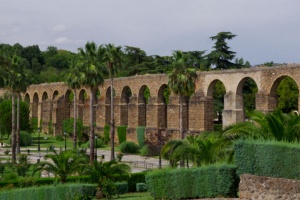
Plasencia — where culture and nature go hand in hand
The historical heritage of Plasencia holds its own in terms of the cultural interest of the other towns and cities of Extremadura, but with the added attraction of its parks.
-
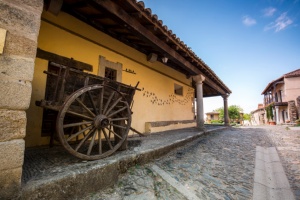
Granadilla
It was evacuated after being declared a flood risk area, currently the village is being rehabilitated to return it to its former glory.
-
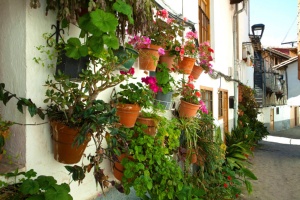
The Jewish Quarter in Hervás
The influence of the Jewish people who lived in this town five hundred years ago can still be felt in its streets, fiestas and gastronomy.
-
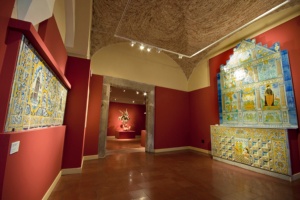
Plasencia Cathedral Museum
The quiet cloister of the cathedral houses some of the most important works in this museum


